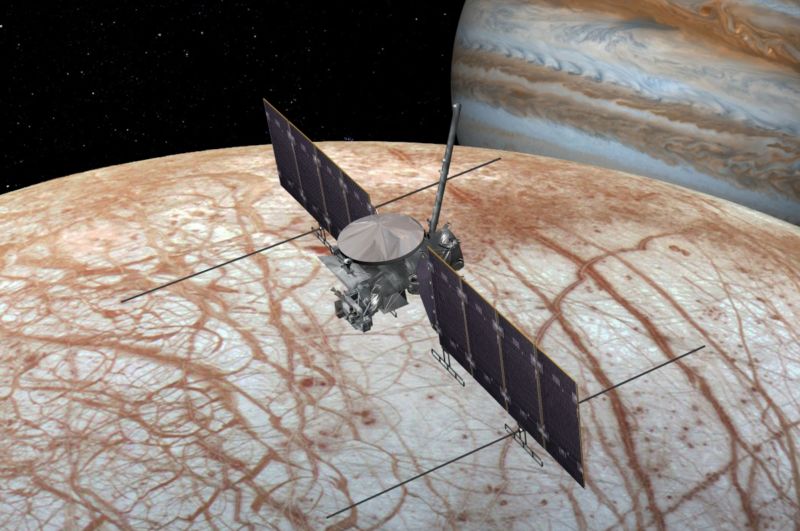
NASA has given its ambitious Europa Clipper mission a green light to proceed into final design and then into construction of the spacecraft. The multibillion-dollar mission remains on target for a launch in 2023 or 2025, the agency said.
Each of NASA's major programs must follow a complicated "lifecycle," in which different phases of development—from formulation of the project idea through launch—are gated by required approvals. This is part of NASA's effort to ensure that programs are developed to certain standards. In this case, the Europa mission has passed what is known as "Key Decision Point-C," the stage at which programs undergo a rigorous review and move from preliminary into final design. Then the construction of spacecraft components begins.
NASA has never sent a dedicated mission to a moon in the Solar System other than Earth's own Moon. But Jupiter's Europa satellite is special, with what scientists believe to be a vast ocean beneath its icy shell capable of harboring life. The large, capable Europa Clipper spacecraft is due to make more than 40 flybys of the moon to better characterize the ice, its thickness, and the ocean below.
As with all major NASA missions, the Clipper has not been without some problems. A report by NASA's inspector general, released in May, highlighted several issues with the spacecraft, which will be built at NASA's Jet Propulsion Laboratory, or JPL.
One of those concerned NASA's workforce that specializes in building these complex, interplanetary missions. "Clipper has had to compete with at least four other major JPL-managed projects for critical personnel resources, causing concern that the project may not have a sufficient workforce with the required skills at critical periods in its development cycle," the report found. This understaffing issue has largely been resolved, a NASA source told Ars.
The second major concern came with regard to which rocket would launch the Clipper to the Jupiter system. Congress has insisted that it fly on the Space Launch System rocket, which would provide a shorter trip by a couple of years. However, the White House has said Clipper should fly on a commercial rocket because this would cost hundreds of millions of dollars less, and also there is no guarantee the Space Launch System rocket will be available for a flight in 2023 or even 2025.
This largely political issue will not be solved by NASA, but the Clipper mission planners need to know their launch vehicle sooner rather than later. The spacecraft can go on either the Space Launch System, SpaceX's Falcon Heavy, or United Launch Alliance's Delta IV Heavy, but if it flies on a commercial vehicle—which the mission scientists have indicated is OK with them—it must be designed for a longer transit time to the outer Solar System.
reader comments
206